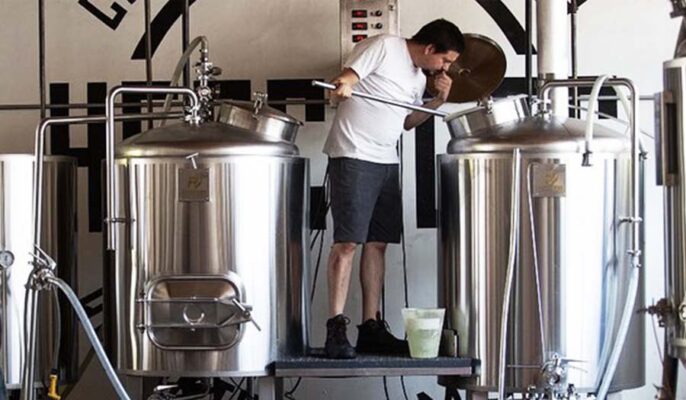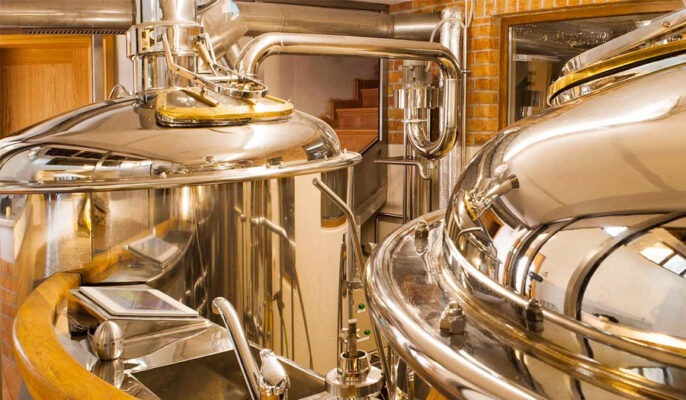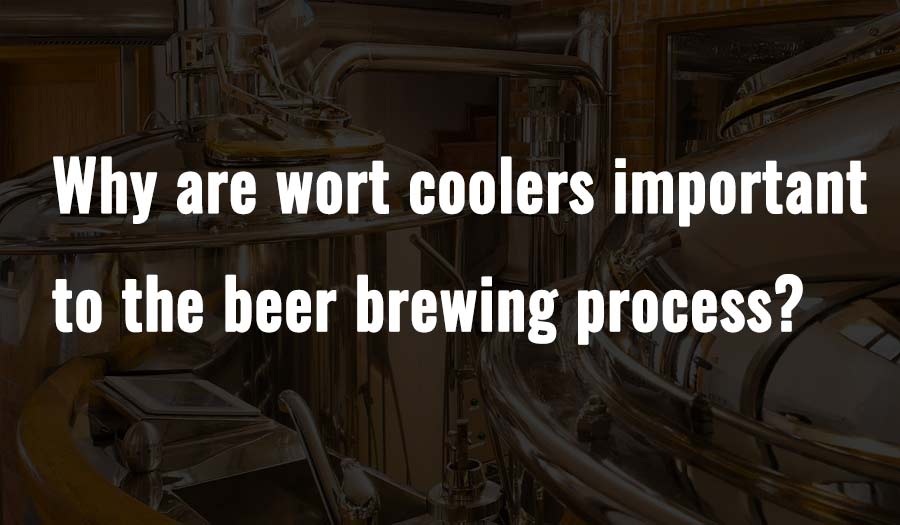Wort coolers play a vital role in the beer brewing process. Its main function is to cool down the boiled wort to a suitable fermentation temperature, so that the yeast can start the fermentation process. In this article, MICET Group will discuss in detail the importance of wort coolers to the beer brewing process, including its principles, types, functions and maintenance methods.
The principle of the wort cooler
The wort cooler is a kind of heat transfer equipment. Its principle is to transfer heat from the wort to the cooling medium by contacting the high-temperature wort with the low-temperature cooling medium (usually cold water or coolant), thereby reducing the temperature of the wort. temperature. A cooler usually consists of a system of pipes through which a cooling medium flows. When the wort flows through these pipes, the temperature of the wort decreases through heat transfer, and finally reaches the required fermentation temperature.
Why do you need to cool your wort?
It is very important to cool the wort to below 80 degrees as soon as possible after boiling, as this is the time when the wort is most susceptible to bacterial contamination. A wort cooler minimizes any chance of infection and helps produce a clearer beer as it helps promote cold breakdown.
Cold dregs consist of protein and tannin complexes that become insoluble as the wort cools, meaning that these solids drip from the liquid as the wort is transferred from kettles to fermenters. A good cold brew translates into a clearer beer.

Types of wort coolers
There are several types of wort coolers, the most common of which include plate coolers, spiral coolers and tube coolers.
Plate cooler
The plate cooler consists of a series of flat plates with many small channels through which the cooling medium can contact the wort to achieve heat transfer. The advantage of the plate cooler is that it is simple in structure and easy to clean, but the heat transfer efficiency is low.
Spiral cooler
Spiral coolers consist of two tubes, one of which is rolled into a helix shape, and the other that sits inside the helix. The cooling medium flows through the spiral tube and contacts with the wort to realize heat transfer. The advantage of the spiral cooler is that it has high heat transfer efficiency, but it is difficult to clean.
Tube cooler
The tube cooler consists of a series of slender pipes with very small gaps between which the cooling medium can flow through the pipes and contact with the wort to achieve heat transfer. The advantage of the tube cooler is that the heat transfer efficiency is very high, but the structure is complicated and it is difficult to clean.

The role of the wort cooler
The wort cooler plays a vital role in the beer brewing process, the main functions are as follows:
Lower wort temperature
In the beer brewing process, the temperature of the wort after boiling is usually high, if it is not cooled, it will not be able to ferment. The wort cooler can reduce the temperature of the wort to the temperature range suitable for fermentation so that the yeast can start fermentation.
Improve fermentation efficiency
The fermentation process requires a certain temperature and time, and the wort cooler can reduce the temperature of the wort, shorten the fermentation time, and improve the fermentation efficiency.
Guarantee the quality of beer
The temperature and time during fermentation have a major impact on the quality of beer. The wort cooler can control the fermentation temperature and time to ensure the quality and taste of beer.
Maintenance method of wort cooler
During the long-term use of the wort cooler, dirt,and bacteria will accumulate, which will affect its heat transfer efficiency and hygienic quality.
Thus, regular cleaning and maintenance are very important. The specific method is as follows:
- After each use, rinse the inside of the cooler with clean water in time to remove residual wort and impurities.
- Regular deep cleaning of the cooler can use professional cleaners and tools to remove the dirt and bacteria inside.
- check the pipes and connections of the cooler for damage or leakage, and repair or replace them in time.
- After brewing, clean and disinfect the inside of the cooler, and store in a dry and ventilated place to avoid moisture and mold contamination.
In a word, the wort cooler plays a vital role in the beer brewing process, by reducing the wort temperature, improving the fermentation efficiency, and ensuring the quality and taste of beer. Reasonable use and maintenance of coolers can improve production efficiency, reduce costs, and contribute to the healthy development of the beer brewing industry.




